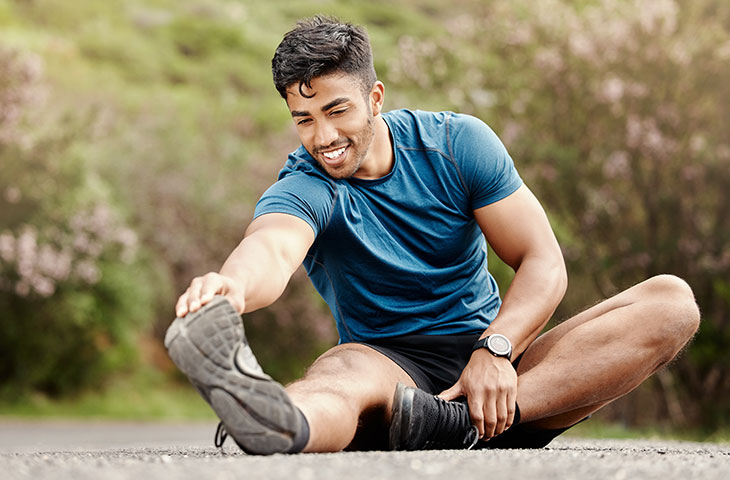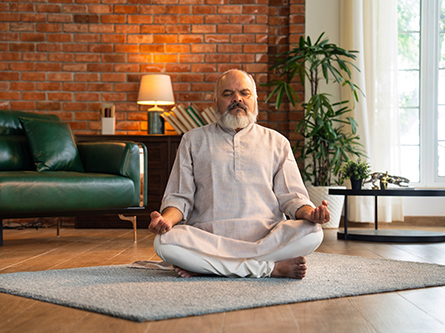
Stretching plays a crucial role in keeping muscles and joints flexible and mobile. It allows your body to move in ways you might not normally move in daily activities. Without regular stretching, muscles can become stiff and may not function properly. Stiff muscles can limit mobility.
To see the benefits of stretching, it's important to add it into your regular training routine. However, remember that improving flexibility requires time and commitment. It often takes several weeks of consistent daily stretching to notice major improvements.
What are the benefits of stretching?
Here are six important benefits of a regular stretching routine:
- Decreased risk of injury: Tight muscles can hinder their ability to extend fully. This can increase your risk of strains, pulls, and joint injuries. Regular stretching helps keep muscles flexible, reducing the chances of injury.
- Better blood flow to muscles and joints: Stretching enhances circulation, improving the delivery of nutrients and oxygen to muscles and joints. This increased blood flow can also reduce muscle soreness and speed up recovery time.
- Improved physical performance: Dynamic stretching before physical activities prepares muscles for exertion. This can improve your range of motion and overall performance.
- Reduced muscle tightness: Stretching helps lengthen muscles. In turn, this can increase range of motion and flexibility over time.
- Stress relief: Stretching can provide a sense of calm and relaxation. It provides a chance to focus on mindfulness and reduce tension in the body.
- Improved coordination and balance: Regular stretching helps muscles function more effectively. This can contribute to better coordination and balance in everyday activities.
See 10 health benefits of meditation and how to focus on mindfulness
What is static vs. dynamic stretching?
There are different ways to stretch. The two most common types of stretching techniques are static and dynamic.
Static stretching
This involves holding a stretch in one position for a period of time. It's most effective after exercise when your muscles are warm. Static stretching allows for gradual lengthening of muscles to their full range of motion.
Dynamic stretching
This type of stretching involves active movements through a range of motion. This can include walking lunges or leg swings. Dynamic stretches are usually done before physical activity to help warm up the muscles.
How often should you stretch?
To see improvements in flexibility, a regular, consistent stretching routine is key. Aim for stretching at least twice a week. Although stretching after every workout is ideal. Focus on stretching the major muscle groups, especially those used during exercise.
How long should you stretch for better flexibility?
It's recommended that you stretch for 20-30 minutes, several times a week. Hold each static stretch for at least 30 seconds. If possible, hold each stretch for 1-2 minutes for deeper benefits.
Learn more about flexibility from UC Davis Sports Medicine
What are some tips for safe stretching?
Experts recommend stretching after exercise for the best results. If you prefer to stretch before physical activity, begin with a 5-minute warm-up (such as light cardio) to increase blood flow to your muscles. This improves your muscles' ability to stretch and reduces the risk of injuries.
When performing static stretches, move slowly and gently into the stretch until you feel slight tension (not pain). Hold the position without bouncing and maintain a regular breathing pattern.
Be mindful that overstretching can lead to injury. Always stretch to the point of mild discomfort, not pain, and progress gradually.
Explore our Sports Performance Program to maximize your training
What are some basic stretching exercises?
Here are some stretches to get you started:
- Quadricep stretch: Stand and grab your ankle, pulling it toward your glutes. You'll feel the stretch in the front of your thigh. Switch legs after holding for 30 seconds.
- Hamstring stretch: Sit with one leg extended and the other bent. Reach toward the extended foot, aiming to touch your toes.
- Calf stretch: Stand in a staggered stance, with one foot forward. Lean forward with both feet flat on the ground to stretch the back calf.
- Shoulder stretch: Extend one arm across your chest. Press it toward your body with the opposite hand.
- Neck stretch: Tilt your head to one side, trying to touch your ear to your shoulder without raising up your shoulder. Hold for 10 seconds. Switch to the other side and repeat several times.
- Back stretch (child's pose): Kneel on the ground. Sit back on your heels, and stretch your arms forward, lowering your chest to the floor. Hold for 30 seconds to 1 minute.
Check out these 8 tips to help ease your back pain
Take a look at this guide to basic stretches
This blog was medically reviewed by UC Davis Health biomechanist Judd Van Sickle.




